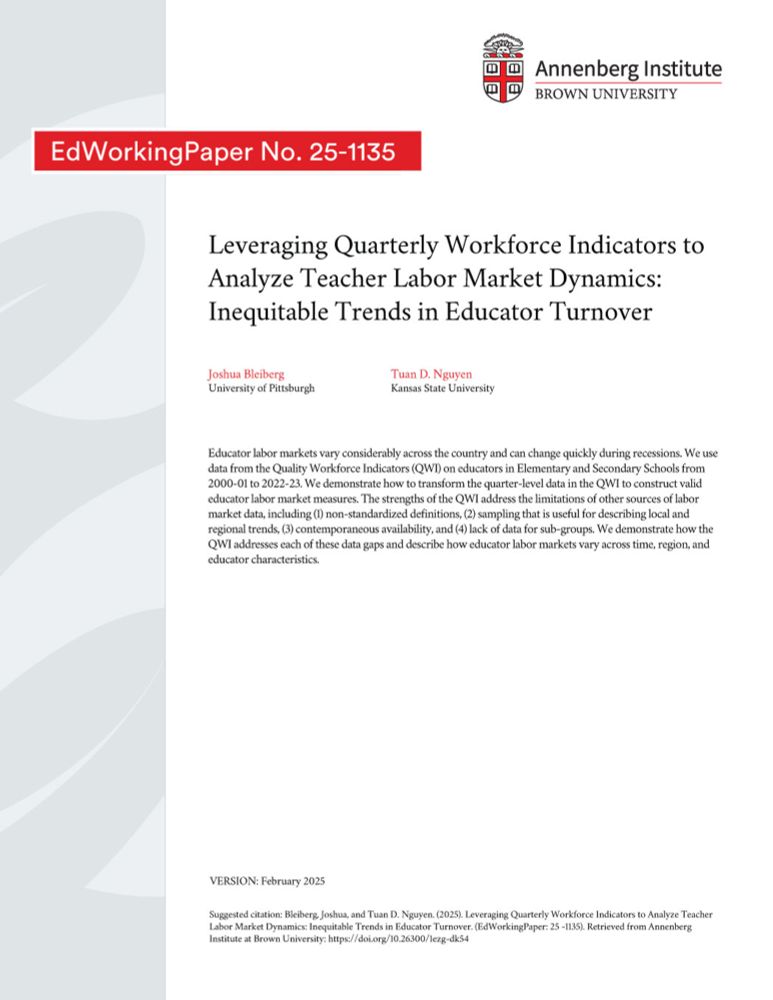
Alex smiling in front of his dissertation intro slide, which says, "Three Essays on Strengthening the Teacher Workforce"
There's a lot going on in the world right now, but in some good news: @alexmoran.bsky.social defended his dissertation today! Alex is such a smart, thoughtful ed policy researcher and the field is beyond lucky to have him. I hope I did a better job advising than I did taking this photo.
17.06.2025 18:13 — 👍 5 🔁 0 💬 0 📌 0
Research Area Specialist Associate | U-M Careers
Please share this position with your networks! You'll get to work with me, @harbatkat.bsky.social, Christine Mokher, Stacey Rutledge, & a great team at the U of Michigan, Florida State U, and the CTE Research Network. Please reach out w/questions - ecton@umich.edu!🧵 careers.umich.edu/job_detail/2...
30.05.2025 20:13 — 👍 2 🔁 2 💬 0 📌 0
Yay!!! Congratulations!!
12.05.2025 21:18 — 👍 0 🔁 0 💬 1 📌 0
University of Chicago Press Journals: Cookie absent
New from Jen Darling-Aduana, @dave-woo.bsky.social, and me: We observed lessons in an online charter school to understand instructional quality. Despite the school's marketing as an innovative, tailored alternative to traditional brick-and-mortar publics, teachers' instruction rarely reflected this.
24.03.2025 22:12 — 👍 17 🔁 8 💬 2 📌 0
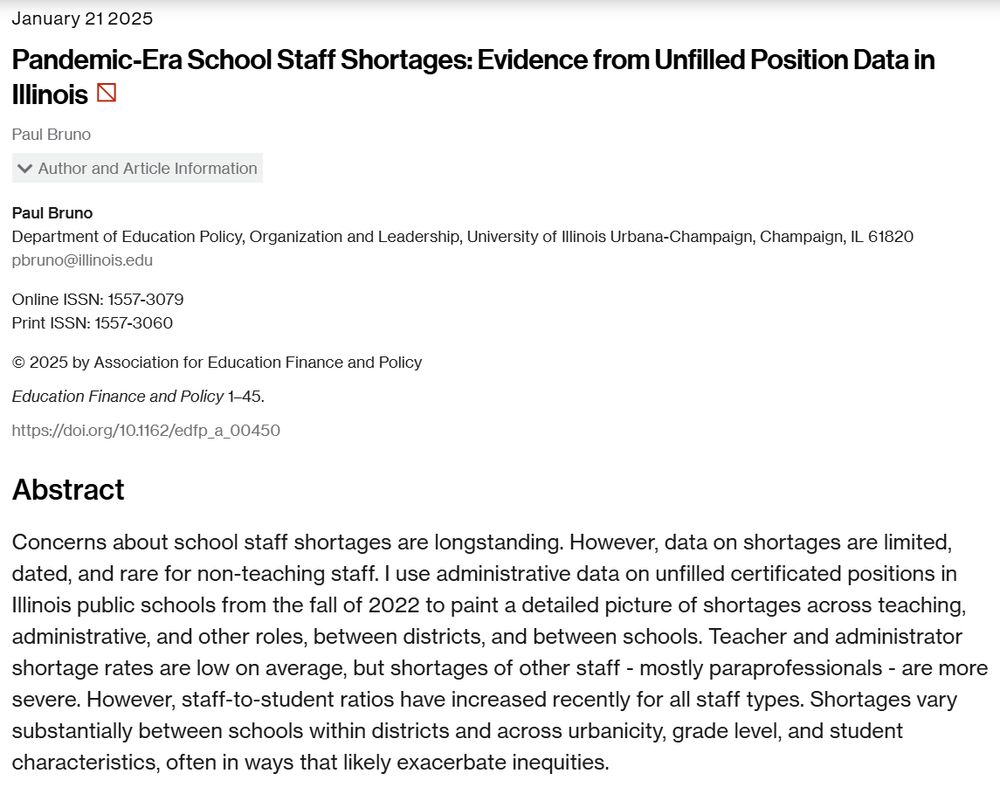
Article abstract reading "Concerns about school staff shortages are longstanding. However, data on shortages are limited, dated, and rare for non-teaching staff. I use administrative data on unfilled certificated positions in Illinois public schools from the fall of 2022 to paint a detailed picture of shortages across teaching, administrative, and other roles, between districts, and between schools. Teacher and administrator shortage rates are low on average, but shortages of other staff - mostly paraprofessionals - are more severe. However, staff-to-student ratios have increased recently for all staff types. Shortages vary substantially between schools within districts and across urbanicity, grade level, and student characteristics, often in ways that likely exacerbate inequities."
New from me in Education Finance & Policy: Pandemic-Era School Staff Shortages: Evidence from Unfilled Position Data in Illinois
doi.org/10.1162/edfp...
29.01.2025 12:56 — 👍 28 🔁 9 💬 1 📌 5
Hey, that's a pretty cool distinction! Especially since this was probably the best review experience I've had - incredibly thoughtful referees whose comments genuinely made the paper better, clear guidance from you, Roddy. Anyone deciding where to send their next paper should seriously consider EFP.
18.01.2025 14:12 — 👍 1 🔁 0 💬 0 📌 0
EFP paper here: direct.mit.edu/edfp/article...
Ungated version available through my website: www.harbatkin.com/publications...
Brookings Brown Center Chalkboard post on this research here: www.brookings.edu/articles/the...
17.01.2025 18:19 — 👍 2 🔁 0 💬 0 📌 0
Broadly, our findings suggest that teacher intent to turn over should be taken seriously as even teachers who do not immediately turn over may take time to follow through on their intent. We also show school leaders may be able to mitigate eventual turnover by improving working conditions. 4/5
17.01.2025 18:19 — 👍 3 🔁 3 💬 1 📌 2
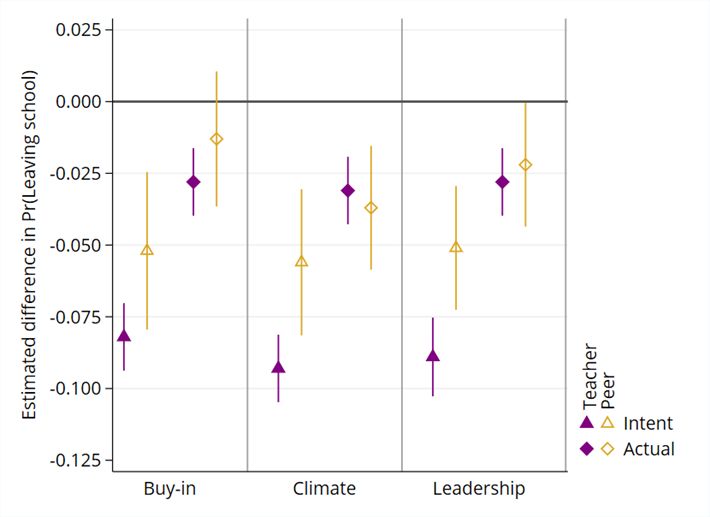
Coefplot showing results from regression models predicting (intent to) turn over as a function of improvement goal buy-in, climate, and leadership. Both individual-level and jackknife/leave-one-out/peer measures show that all three measures are associated with reduced probability of (intent to) turn over.
We draw on a variety of other survey measures on organizational commitment and working conditions, and find that improvement goal buy-in, climate, leadership, and school safety are all associated with lower intent to turn over and actual turnover behavior. 3/5
17.01.2025 18:19 — 👍 1 🔁 0 💬 1 📌 0
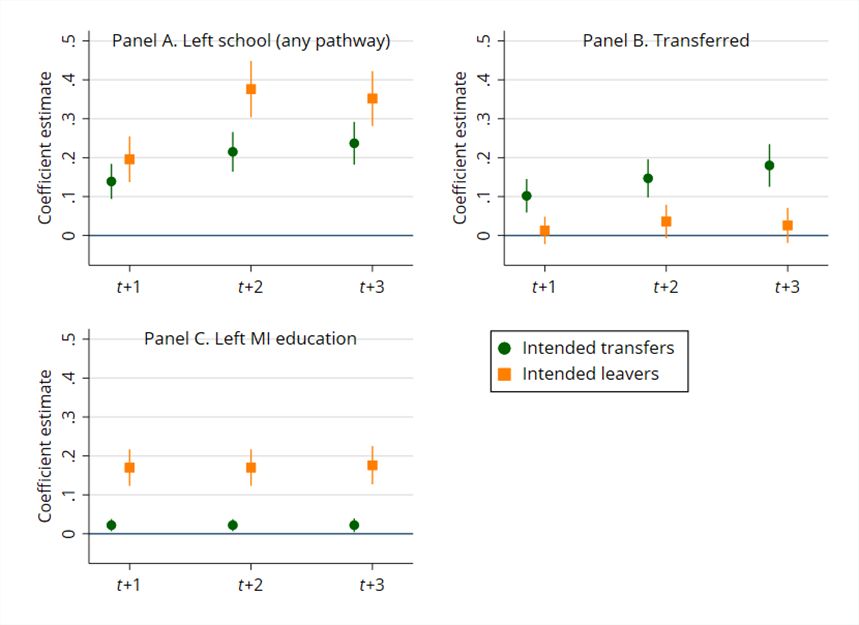
Coefplot from regression models predicting leaving (for any pathway out, to transfer, and to leave MI education in three different panels, respectively) as a function of intent to do so 1, 2, and 3 years out. Models show increasing coefficient estimates over time on leaving for any pathway out and transfers, and consistently significant/positive estimates for leaving MI education.
Linking teacher survey data to statewide administrative data at the teacher level, we find intent to turn over is predictive of immediate turnover, but that turnover behavior can lag behind intent. This extends past research that can only observe teachers for one year after reported intent. 2/5
17.01.2025 18:19 — 👍 1 🔁 0 💬 1 📌 0
So excited that this work is finally published in Exceptional Children! I loved working on this study of the paraeducator workforce with @roddy-theobald.bsky.social @lizbettini.bsky.social and @natejones.bsky.social.
Check it out here: journals.sagepub.com/doi/10.1177/...
17.12.2024 15:59 — 👍 18 🔁 5 💬 0 📌 0
👆This!
12.12.2024 19:29 — 👍 0 🔁 0 💬 0 📌 0
Education scholars heading to #APPAM2024 - @christocleve.bsky.social and I are organizing an informal happy hour meet up Thursday night 11/21 at The Brass Tap, 7pm! Would love to reconnect with folks while we're all together next week.
Please amplify and feel free to invite others!
15.11.2024 17:29 — 👍 49 🔁 24 💬 3 📌 4

Screenshot of the top of the article. Title is Racial Category Usage in Education Research: Examining the Publications from AERA Journals. Authors are Dominique J Baker, Karly S Ford, Samantha Viano, and Marc P Johnston-Guerrero. Abstract reads: How scholars name different racial groups has powerful salience for understanding what researchers study. We explored how education researchers used racial terminology in recently published high-profile peer-reviewed studies. Our sample included 1,427 original empirical studies published in the nonreview AERA journals from 2009 to 2019. We found that two thirds of articles used at least one racial category term, with an increase from about half to almost three quarters of published studies between 2009 and 2019. Other trends include the increasing popularity of the term Black, the emergence of gender-expansive terms such as Latinx, the popularity of the term Hispanic in quantitative studies, and the paucity of studies with terms connoting missing race data or including terms describing Indigenous and multiracial peoples.
Oh yay, this paper is finally out at AERA Open!
journals.sagepub.com/doi/10.1177/...
15.11.2024 17:27 — 👍 190 🔁 53 💬 12 📌 3
🙋♀️
15.11.2024 14:30 — 👍 1 🔁 0 💬 1 📌 0
I would like to be added, please!
13.11.2024 15:10 — 👍 2 🔁 0 💬 1 📌 0
Please add me!
12.11.2024 14:59 — 👍 1 🔁 0 💬 1 📌 0
Please add me if you're still adding folks!
11.11.2024 21:31 — 👍 0 🔁 0 💬 0 📌 0
*Loved* that movie.
28.02.2024 15:32 — 👍 1 🔁 0 💬 1 📌 0
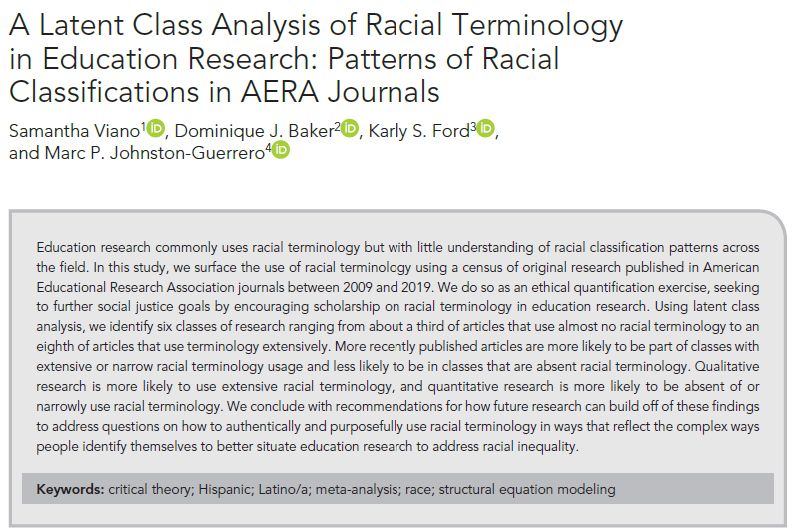
Educational research commonly uses racial terminology but with little understanding of racial classification patterns across the field. In this study, we surface the use of racial terminology using a census of original research published in American Educational Research Association journals between 2009 and 2019. We do so as an ethical quantification exercise, seeking to further social justice goals by encouraging scholarship on racial terminology in educational research. Using latent class analysis, we identify six classes of research ranging from about a third of articles that use almost no racial terminology to an eighth of articles that use terminology extensively. More recently published articles are more likely to be part of classes with extensive or narrow racial terminology usage and less likely to be in classes that are absent racial terminology. Qualitative research is more likely to use extensive racial terminology, and quantitative research is more likely to be absent of or
🚨 Out now in Ed Researcher @aeraedresearch.bsky.social a new study with @bakerdphd.bsky.social Karly Ford&Marc Johnston-Guerrero 🚨
We coded a census of original research from AERA journals (2009-19) to surface hidden patterns in authors use racial terminology
journals.sagepub.com/doi/10.3102/...
1/N
19.02.2024 22:41 — 👍 10 🔁 6 💬 1 📌 1
Huge benefit. Then it's impressive no matter what it looks like.
22.01.2024 01:17 — 👍 1 🔁 0 💬 0 📌 0
We bring cookies around to neighbors often and found out a year in that the old lady who hand-delivered a thank-you note each time has a gluten thing. I think she just gave them to her husband? But no one is ever visibly offended by our 4yo's homemade baked goods (even if they quietly toss them).
22.01.2024 00:39 — 👍 2 🔁 0 💬 1 📌 0
You should be able to change the font size in Preferences from the do-file editor. I think?
17.01.2024 02:57 — 👍 0 🔁 0 💬 1 📌 0
Our findings have policy implications. Many schools across the US did move off state low-performing lists. But that doesn't mean they have ample resources for their continued work. Turnaround schools--even exited ones--will need help supporting students given the vast challenges wrought by COVID.
08.11.2023 16:48 — 👍 1 🔁 0 💬 0 📌 0
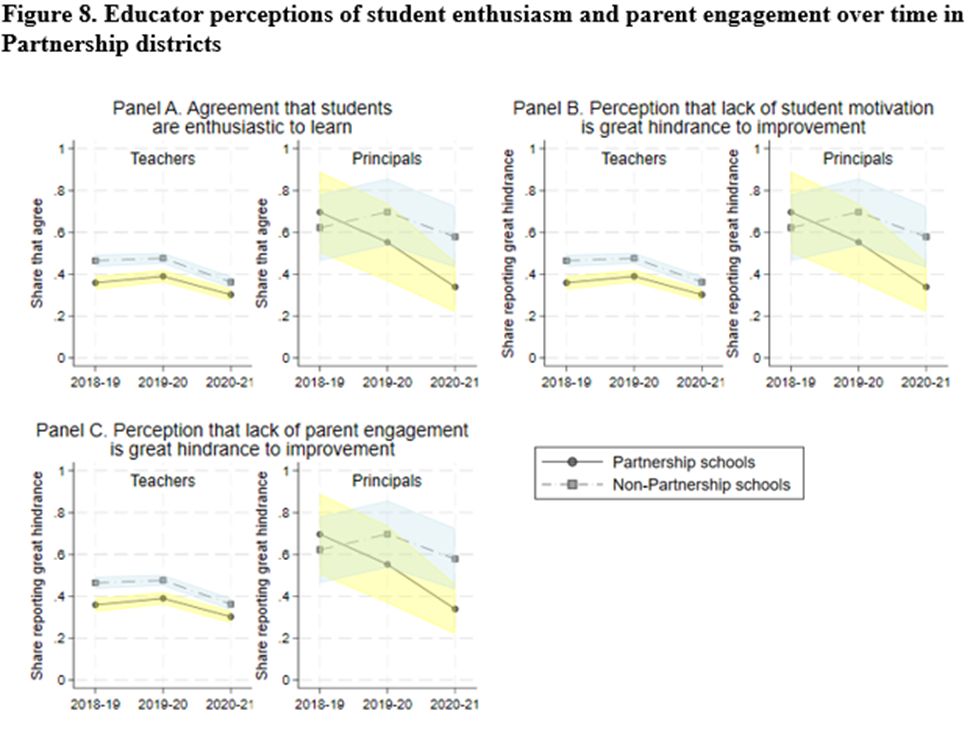
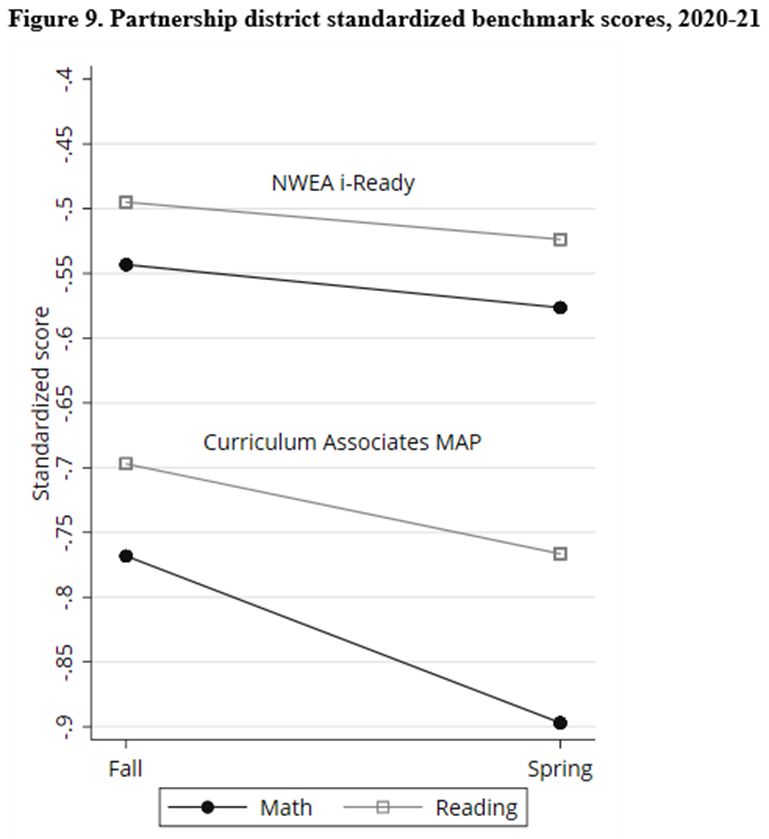
These factors contributed to disrupted learning in turnaround districts and especially turnaround schools--those schools that were aiming to improve before the pandemic. This undermined improvement efforts and students made slower learning gains than elsewhere in the state during the pandemic.
08.11.2023 16:41 — 👍 0 🔁 0 💬 1 📌 0

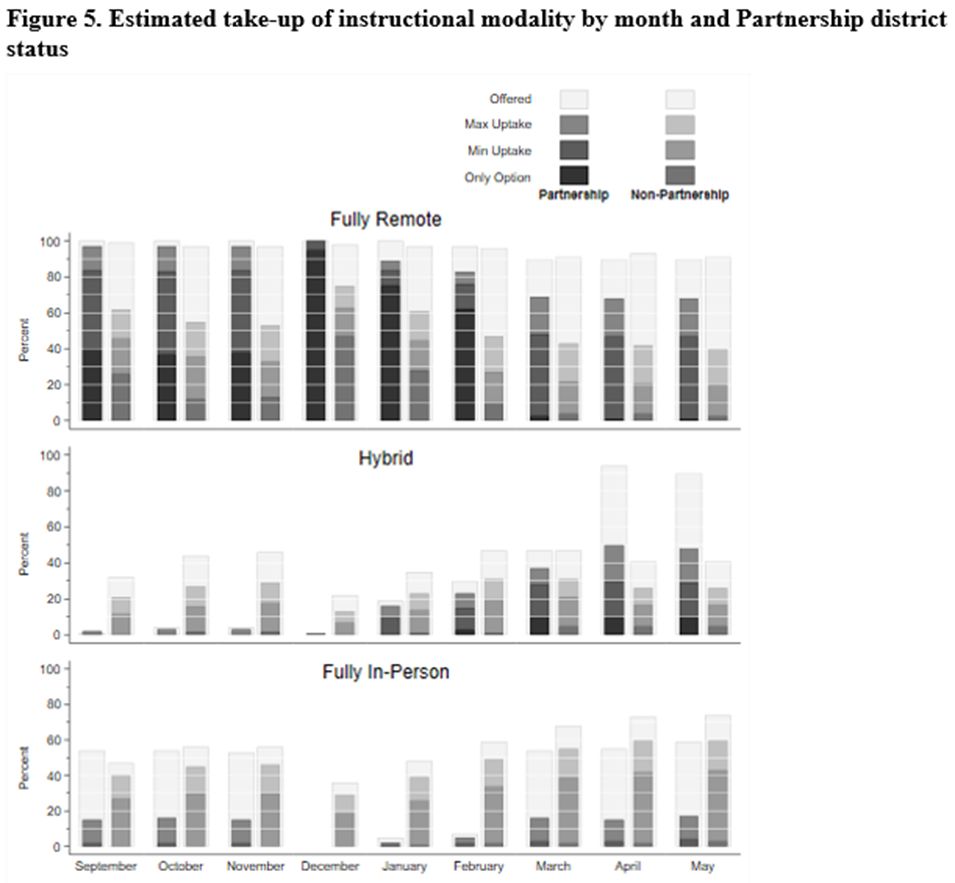
And turnaround districts remained remote for longer than others in MI, further amplifying the role of these disruptions in student learning.
08.11.2023 16:37 — 👍 1 🔁 0 💬 1 📌 0
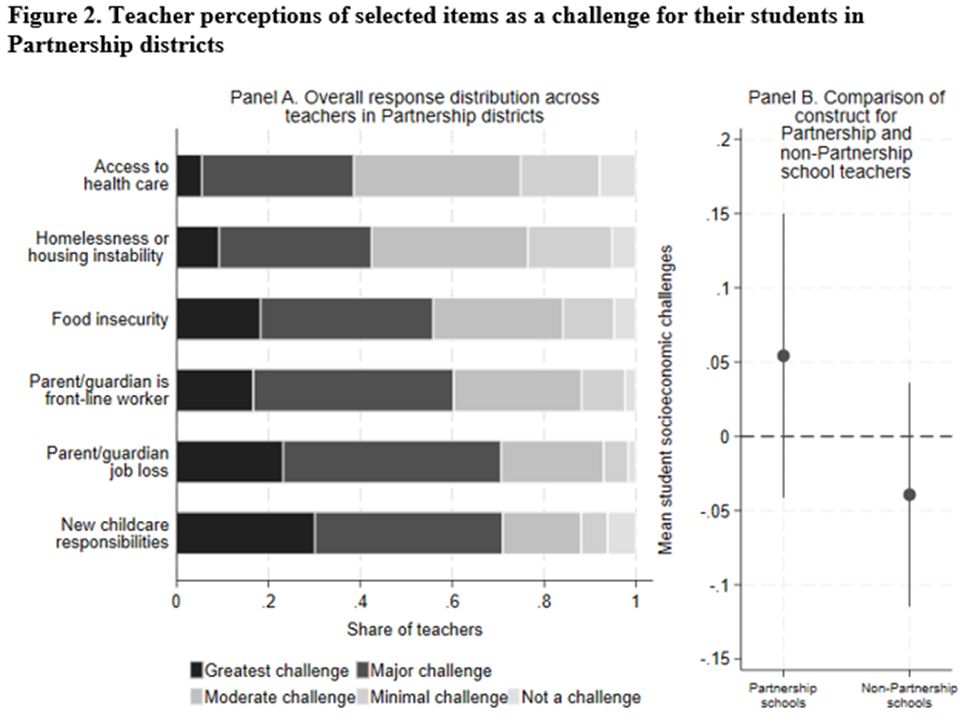
In turn, students engaged with especially salient challenges related to new at-home responsibilities, parent/guardian job loss, food insecurity, and housing instability. These factors contributed to an especially challenging at-home learning context.
08.11.2023 16:35 — 👍 0 🔁 0 💬 1 📌 0
EFP publishes policy-relevant research papers concerning education finance, policy, and practice.
aefpweb.org
Data science + noisy music | btskinner.io | he/him
he/him/his; Assistant Professor at University of Utah ELP; all thoughts are my own
Director, Stratification Economics at The Roosevelt Institute/Roosevelt Forward
@rooseveltinstitute.org
Sociologist, Dad, Autistic person, Bathos-Enjoyer
Taxes are what we pay for civilized society
Opinions are my own
Assistant Professor of Economics and Education at Teachers College, Columbia University
Profesora Asistente, Universidad de O'Higgins (Chile). Instituto de Ciencias de la Educación. Education Policy, School Choice and Inclusion.
Researcher of online rumors & disinformation. Former basketball player. Prof at University of Washington, HCDE. Co-founder of the UW Center for an Informed Public. Personal account: Views may not reflect those of my employer. #RageAgainstTheBullshitMachine
Based at @ucberkeleyofficial.bsky.social, O-Lab generates rigorous evidence to inform social policy and advance economic opportunity. #econsky #policysky
Learn more at olab.berkeley.edu, or find us at linkedin.com/company/berkeley-olab.
Associate Professor and Director of the Institute of Higher Education at the University of Florida. I study the impact of online education, community colleges, and state policies in higher education.
Accountability Reporter for Kensington Voice. Previously WHYY. Heard on NPR, words in The Intercept, Chalkbeat, Inquirer. Based in Philly, raised in Jersey.
Education Reporter for SCNG
Los Angeles Press Club Fellow 2023
CSUDH Alum 2020
I write about schools for Alabama Daily News and Alabama Public Television. All children deserve the best the grownups can give. Likes: Dogs and gardening.
Education reporter for The Baltimore Banner, a nonprofit news organization.
Proud graduate of Bates College covering higher education at the @thebaltimorebanner.com, say hi + send tips: ellie.wolfe@thebaltimorebanner.com
Investigative reporter covering inequity @hechingerreport.org
- Board member @ire-nicar.bsky.social
- Treasurer NAHJ New England
- Past lives @apnews.com @salonnewsroom.bsky.social
🇨🇴 adoptee, working on book about decline of international adoption
Bureau chief at Chalkbeat Indiana. Past: IndyStar, The Incline, Knoxville News Sentinel and more. Built by the IDS
Florida woman beating the heat in Texas | Covering early childhood for the Fort Worth Star-Telegram
Writing about education (and other things) for Ashland Source via Report for America | UMontana alum
Education Reporter for The Baltimore Banner
kristen.griffith@thebaltimorebanner.com
https://www.thebaltimorebanner.com/author/kristen-griffith/
Education Reporter
Denton Record-Chronicle/KERA 90.1FM
https://muckrack.com/lbreedingdrc


